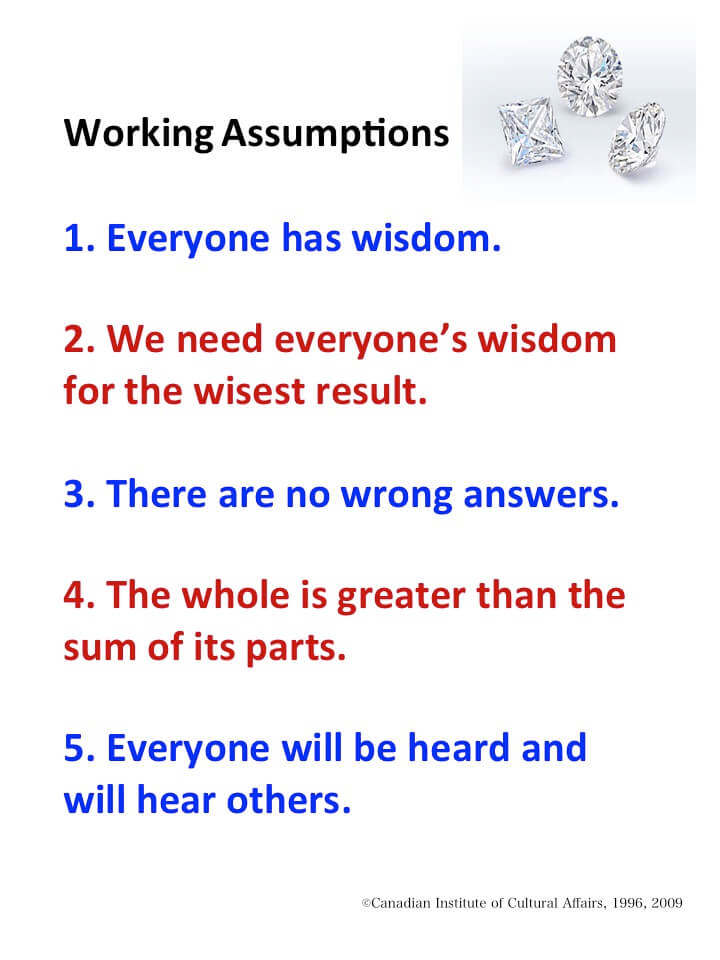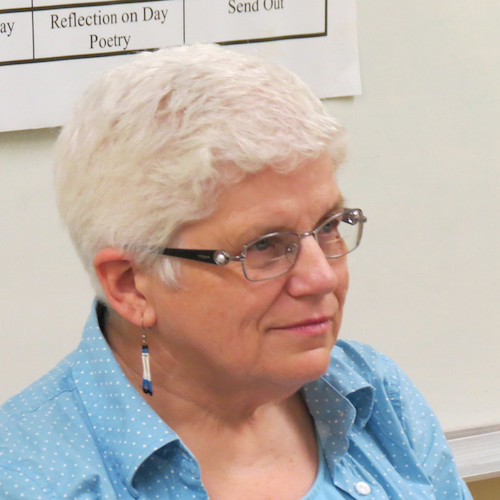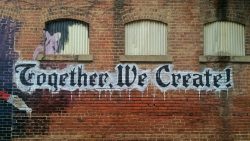
ICA’s Working Assumptions set the tone for inclusion, specifically
“Everyone has wisdom.” and “We need everyone’s wisdom for the wisest result.”
These apply to all kinds of diversity, from colour or ethnic background to disabilities and more.
When we leave people out of deliberations who will be affected by the results, our results are much less effective, have unexpected consequences, and can even be harmful.
So how do we make sure that we have included the diversity that is needed, both for the people involved to experience being heard, and to incorporate their wisdom for wise results?
Stages to consider:
1. Plan with the client for ensuring that participants represent different backgrounds and perspectives, ensuring that a diverse group of stakeholders has input into the topic.
This is not always easy – you may have to encourage the client by suggesting that the results will be stronger and last longer if they incorporate a range of perspectives – and that the facilitator role includes making sure that all voices are heard respectfully.
2. Prepare for the diversity. I find it most helpful to co-facilitate with a person with a different background than me, especially one who has a similar background to people in the group, so that we can design the most respectful and inclusive process for the group.
Think through what topics or organizational culture attributes may spark hidden associations or triggers from people’s experience, (including your own) or suppress active participation.
This is where learning about the experience of many kinds of people is very useful. It is also helpful to reflect on your own biases, making them conscious so you can decide whether to act on them.
3. Actively evoke participation through making the event safe for a variety of perspectives to be expressed:
o Go through the Working Assumptions with the group at the beginning and keep them visible for reference.
o Prepare by renewing your own stance to be curious, open and respectful.
o Use appropriate beginning rituals or icebreakers that are related to the group and the topic.
For example: Begin with smudging or an opening prayer by an elder in an Indigenous group, or “Each person give your name and one thing you are passionate about in your work” for a non-profit organization.
Consult with your client to make the most appropriate choice of how to begin.
o Use pair/share, or small breakout groups when exploring a hot topic to allow safety of expression, so that reporting in the large group is done as the small group and no individual is singled out.
o Ask for “someone who has not spoken” or “somebody with a very different perspective” frequently.
o Accept all responses with the same level of active listening.
o Ask questions of clarification and understanding when an opinion is stated, then ensure other opinions are heard as well.
o If people disagree, make sure that at least 3 people with different perspectives speak, to prevent “us and them” images and behaviours from developing in the group.
If the topic itself is race, this article by Barb MacKay of North Star Facilitators is helpful.





